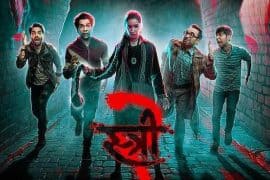
For your ears and not your digestive systems
Hot Rats is Frank Zappa’s second solo album post The Mothers and was released in 1969. It consists of six tracks with a collective length of almost an hour and in the Grand Wazoo’s own words, “it is a movie for your ears”. One of the key features of this album is the remarkable editing and post-recording work done by Zappa himself. As for the ominous album cover, it gives the expression, ‘rose-tinted’ a completely new meaning.
Hot Rats is primarily an instrumental album with Willie the Pimp being the only exception; consequently, the album title was taken from this song. The peculiar and raspy vocals seem just right for the bawdy lyrics, which also reflect Zappa’s tendency of writing songs in the first person, placing himself as the eponymous character as always. Technically sound music and at the same time far more vibrant and human than any of its rivals in this department. Another realization that might strike you through the course of the album is that Zappa sure had a knack of picking the right talent as is evident by the more than able and flawless rhythm section. Ian Underwood of course has his virtuosity stamped all over the album with numerous instruments ranging from the flute to the organ, particularly in The Gumbo Variations, which is basically a legendary sixteen minute jam, and in which Underwood manages to hold his own with the saxophone. The way he makes the instrument shriek, bark and bray, is just insane! Regarding Zappa himself, his characteristic complex chronological structures are evident in all the compositions, a clear influence of his penchant for classical music. There are the typical rock n’ roll and blues licks, and then the psychedelic aspects of Zappa’s music. Unlike Floyd, it is a fast-paced brand of psychedelia but not of the dismal variety that is called modern psych or trance. Of course, Zappa’s influences derived from the avant-garde movement find ample space throughout the album, particularly in the form of his eccentric and brilliant guitar solos. The album starts with Peaches en Regalia, which at just about three and a half minutes is one of the shorter songs, and yet it stands out for its complex structure and sheer musical genius. You know you are in for a ride as soon as the drum intro begins.
Son of Mr. Green Genes puts the ripple and flutter effects to excellent use without sounding repetitive. Little Umbrellas, the shortest song of the album has to its credit a simply superb bass line and rhythm, which gradually oscillates between eeriness and cheerfulness. As for the final song, It must be a Camel, Zappa achieves an ineffable effect with the help of somewhat muffled drumbeats and guitar notes. The almost robotic and hypnotic interlude is captivating to say the least. A special mention to the judicious use of violins throughout the album, although the flutes have been woefully underplayed. Oh, and don’t eat the yellow snow!
]]>



Comments are closed.